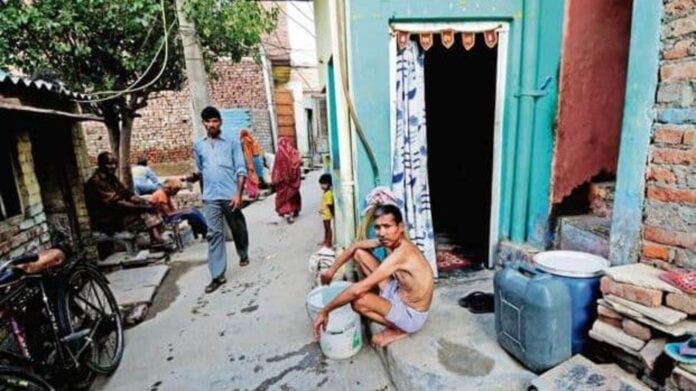Addressing inequality requires a nuanced understanding. Firstly, a healthy amount of economic inequality is essential for promoting growth. Secondly, not all inequalities are the same or unjustified. Thirdly, economic inequality is often an effect rather than a cause. Ignoring other causes of inequality and focusing on heavy-handed measures like wealth redistribution will continue to exacerbate overall inequality.
There are two types of economic inequality. Fair inequality, which stems from choices made in equal environments, incentivizes innovation, risk-taking and value creation. And then there is unfair inequality, which is undesirable; it is often systemic and rooted in factors beyond individual control, such as birth circumstances, access to education, healthcare and employment opportunities.
For instance, income differences between a doctor and a plumber are fair, while circumstances that force an aspiring doctor to end up becoming a plumber are unfair. Therefore, the central focus should be on addressing the lead indicators (circumstantial inputs) rather than lag indicators (economic output).
Often, inheritance differences are seen as unfair inequality. But if the wealth inherited reflects fair inequality, then inheriting it cannot be unfair inequality. Treating all forms of wealth inheritance as factors of unfair inequality would reduce incentives for wealth creation.
Inequality in input factors such as education, skill, employment, and health etc, has a far greater bearing on economic inequality. These inequalities have existed in India for far too long, resulting in the institutionalization of inequality across generations. For instance, in 2022, Hyderabad alone attracted 11.9% of India’s overall FDI.
Residents of most regions in India start at a geographic disadvantage compared to cities such as Hyderabad, Mumbai and Bangalore. It is much easier for enterprises to set up offices in these cities, hire talent and become operational compared to most other parts of India. This phenomenon, built over many decades, was at the root of India’s 2020 migrant labour crisis.
No wealth redistribution can solve this. We need to implement land acquisition reforms that make it easier for enterprises to invest and create non-agricultural jobs in various districts of India. We also need to eliminate logistical and connectivity inequalities between Indian districts.
Between 1947 and 2003, India set up just one All India Institute of Medical Sciences (AIIMS) in New Delhi. It was only in 2003 that India began to take measures to correct regional inequality in the availability of reliable and affordable healthcare by setting up more AIIMS and improving the overall quality of medical services. Today, we have 20 AIIMS, with more about to become operational.
The scarcity of AIIMS for several decades after independence, coupled with otherwise poor health infrastructure, made AIIMS in New Delhi an elite hospital inaccessible to an average Indian. The same is true of IITs and IIMs. By increasing their numbers, the average quality of output across these institutes may have reduced, but more people can access them across various districts.
Such expansion does not diminish the absolute or relative quality of institutes like IIM-Ahmedabad, IIT-Kharagpur, or AIIMS Delhi. However, increasing access to such institutes reduces several other forms of inequalities, in addition to health and educational inequalities.
Piketty et al’s study shows that the upward slope of incomes of the top 1% and the downward slope of the incomes of the bottom 50% in India have been flattening since 2017.
Piketty et al posit that economic inequality in India is higher than in other nations such as the US, China, the UK, and France. However, that’s a consequence of inequitable advancement of input factors such as infrastructure, education, health, etc, to which India’s poor had little access. While we recently achieved 100% electrification of villages, we still haven’t achieved 100% electrification of Indian homes.
The ASER report highlights stark inequalities in the quality of education imparted to Indian children. India also has chronic judicial inequality, with most undertrials being poor and illiterate or semi-literate, having no access to basic justice. About 42% of India’s labour force is engaged in farming, which accounts for only 18% of India’s GDP. The remaining 58% benefit from 82% of India’s economic output.
The stalling of farm reforms not only furthers this inequality but perpetuates inequality between rich farm landowners and poor landless farm labourers. It is due to the lack of alternative employment opportunities in the manufacturing sector, caused by geographical inequality, that the poorest among India’s labour force are employed as farm labourers. Wealth redistribution will have no positive bearing on addressing these fundamental inequalities.
This is not to say that the wealthy don’t have to contribute to mitigating economic inequality. While avoiding punitive tax rates that could stifle economic activity, implementing a progressive tax system where the wealthy contribute their fair share is not just an economic but also a moral imperative.
However, governments should first ensure the effective use of these tax revenues to fund public services, develop infrastructure and provide safety nets for the vulnerable. Channeling India’s tax revenues on expenditures that don’t have an economic multiplier effect further institutionalizes economic inequality.
Investments made in Tier-III and below regions by enterprises should attract significant tax breaks and incentives. India’s poor deserve measures that address economic inequality at its root, and not populistic policies such as wealth redistribution. This approach would provide them with six-lane highways for upward mobility and economic equality. As Adrian Rogers rightly pointed out, we can’t multiply wealth by dividing it.
The author is a governance strategy and public policy professional. He posts on X (formerly twitter) from the handle @prasannakarthik.
You are on Mint! India’s #1 news destination (Source: Press Gazette). To learn more about our business coverage and market insights Click Here!
Download The Mint News App to get Daily Market Updates.
More
Less
Published: 31 May 2024, 11:00 AM IST
#Wealth #redistribution #fix #Indias #economic #inequality
